It’s not everyday one gets to enjoy wine from Italy’s oldest winery, and this distinguished wine lives up to its considerable history and reputation.
This month the Italian Food, Wine and Travel (#ItalianFWT) group of bloggers is exploring Tuscany, including the Chianti region.
About Chianti
One of the things I love about the world of wine is that it is ever evolving.
When I received a media sample of the 2015 Barone Ricasoli Chianti Classico Gran Selezione Castello di Brolio, and saw it denoted as “Gran Selezione” on its label, I thought it was marketing hype. What I didn’t know was that in 2014, a third classification was added to the Chiant Classico DOCG.
At this point, I think it helpful to understand a bit of the Chianti region’s history.
It is situated in central Italy in the the region of Tuscany, which is renown for its rolling hills, cypress trees and stone castles . The first Chianti region was delineated in in 1716. That region is now known as Chianti Classico. During the ensuing centuries wine production throughout the region grew and expanded beyond its original geographic delineation.
In 1967 the Italian government created the Chianti Denominazione di Origine Controllata (DOC), which was included a central subzone of Chianti Classico that was delineated in 1716.
In 1984, the appellation attained Denominazione di Origine Controllata e Garantita (DOCG) status, Italy’s highest level of wine classification. Here’s where it can be confusing, there are seven Chianti DOCG subzones (refer to the map below):
- Chianti Colli Aretini
- Chianti Colli Fiorentini
- Chianti Colli Senesi
- Chianti Colline Pisane
- Chianti Montalbano
- Chianti Montespertoli
- Chianti Rufina
There are approximately 38,000 acres of vineyards in the Chianti DOCG and its seven subzones. You’re most likely to find wine from the Rufina and Colli Senesi subzone here in the U.S.
In 1996, Chianti Classico separated from Chianti DOCG and became its own DOCG.
The Classico designation roughly corresponds to the original (and so theoretically the best) area of production in the Chianti hills. You’ll find the famous black rooster (gallo nero) seal (below) on bottles of Chianti Classico. There are approximately 17,800 acres of vineyard in the Chianti Classico.
To add another layer of complexity, there are three levels of Chianti Classico (see the table below).
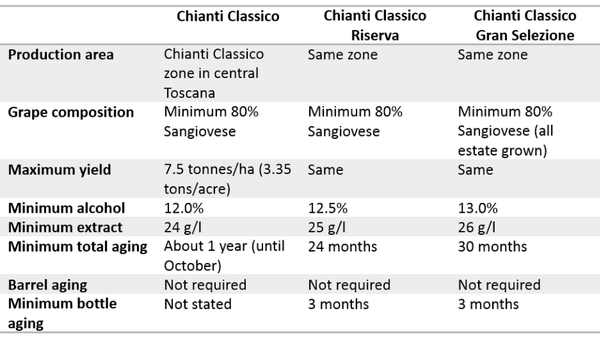
Chianti Classico Riserva requires mandatory 24-months of barrel aging, plus an additional three months in bottle, before release.
The Chianti Classico Gran Selezione designation was added in 2014. Besides its mandatory 30-month barrel aging period before release, it’s also the first—and so far only—Italian wine that by law must be made solely with estate grapes (or with grapes from vineyards leased by the same firm that vinifies and bottles the wine). Wine with this designation must pass a strict Italian tasting board to confirm that the wine deserves the designation. Finally, not every vintage will qualify to declare as Gran Selezione.
Chianti’s regulatory body estimates that about 8 or 9 percent of Chianti Classico DOCG production will qualify for the Gran Selezione level.
Disclosure: I received this wine as a media sample. I received no compensation for this post, and all opinions presented are my own.
In My Glass
I sampled the 2015 Barone Ricasoli Chianti Classico Gran Selezione Castello di Brolio. It turns out there is quite a bit of history behind the Barone Ricasoli winery. The history of the Ricasoli family has been allied with wine since 1141. The family’s Brolio Castle, located in the heart of the Chianti Classico, is home to Italy’s oldest winery. Baron Bettino Ricasoli (1809 – 1880), illustrious politician and visionary wine entrepreneur is credited with laying the foundations of the modern Chianti style. In 1872 he wrote a letter to Cesare Studiati, professor at the University of Pisa which memorialized a formula for the “perfect wine”. That formula, which was strict percentage of 7/10 Sangiovese, 2/10 Canaiolo, 1/10 Malvasia or Trebbiano would become the foundation of the wine we know today as Chianti Classico.
Baron Francesco Ricasoli has been at the helm of the winery since 1993. Under his leadership, the winery has renovated and mapped its vineyards, and conducted ongoing studies of soil types and clonal selections of the Brolio Sangiovese. The family’s 1,200 hectares property includes almost 240 hectares of sustainably farmed vineyards and 26 of olive groves. Its south/southwest facing vineyards are situated at 250 to 450 meters above sea level.
The wine is a blend of 90% Sangiovese, 5% Cabernet Sauvignon, and 5% Petit Verdot sourced from its best plots.
My tasting notes follow:
The wine pours a translucent dark ruby color with inviting aromas of blackberry, black cherry, black currant, vanilla, dust and dried rose. On the palate the wine is medium-bodied, elegant and harmonious with mouth-watering acidity and firm but well integrated tannins and and blackberry, black cherry, black currant, vanilla and subtle spice flavors with a long finish. Very Good to Outstanding| 14% ABV| SRP – $70
It’s not everyday one gets to enjoy wine from Italy’s oldest winery, and this distinguished wine lives up to its considerable history and reputation.
On My Plate
I recently dined at a local restaurant where I was introduced to Oxtail and Grits. Inspired by that experience, I decided to make Guazzetto (gwa-CHET-to), which means “splashed with wine”. Although it refers to the sauce which can be used with fish or chicken or pork, many Italians grew up eating it as an oxtail stew.
I adapted this recipe so that I could cook it in an Instant Pot, and served the sauce on a bed of Italian grits (a.k.a. Polenta)
After cooking the oxtails in the sauce, they are removed, the meat shredded and added back the the sauce. The results is tender, meal in your mouth, beef stew that was uber delicious.
The wine’s weight, flavor profile and tannins made it the perfect complement for my Guazzetto!
Are you looking for more Tuscan wine and food pairing ideas? Check out what my fellow#ItalianFWT bloggers discovered during their virtual visit to Tuscany!
- A Taste of Tuscany’s Gran Selezione by Vino Travels
- A Taste of Tuscany Without Leaving Home by My Full Wine Glass
- Arugula and Shrimp Pizza with an Olive Oil Drizzle and a Ricasoli Chianti Classico by A Day in the Life on the Farm
- Can’t Serve Chianti Without Olive Oil by L’Occasion
- Castello di Brolio Olio e Vino: Schiacciata all’Uva + 2015 Barone Ricasoli Chianti Classico Gran Selezione from Culinary Adventures with Camilla
- Chianti Classico Reaches New Heights: Reflections on the 2019 Anteprima from Avvinare
- Exploring Castello di Brolio & On location Pairings from the Home of Chianti Classico from Somm’s Table
- Garlic Broccoli Pasta with Italian Olive Oil from Cooking Chat
- Gran Selezione: Pinnacle of the Chianti Classico Ladder? from FoodWineClick!
- New Discoveries On The Rich Tuscan Wine Map from Grapevine Adventures
- Ricasoli Chianti Paired with Tomatoes 3 Ways from Asian Test Kitchen
- Shrimp Marinara Wine Pairing…from Maremma Toscano by Steven’s Wine and Food Blog
- Tasting Tuscany: Tuna, Beans, EVOO, Chianti, Vermentino by Wine Predator
- Traditional Italian Soup Paired with Chianti Classico from Always Ravenous
- Tuscan Temptations: Ricasoli Brolio Chianti Classico 2016 with Grilled Chicken Sausage Ragu over Polenta Muffin from Grape Experiences
If you see this soon enough, please join our chat on Twitter at #ItalianFWT on Saturday, Nov. 2 at 8am PDT.
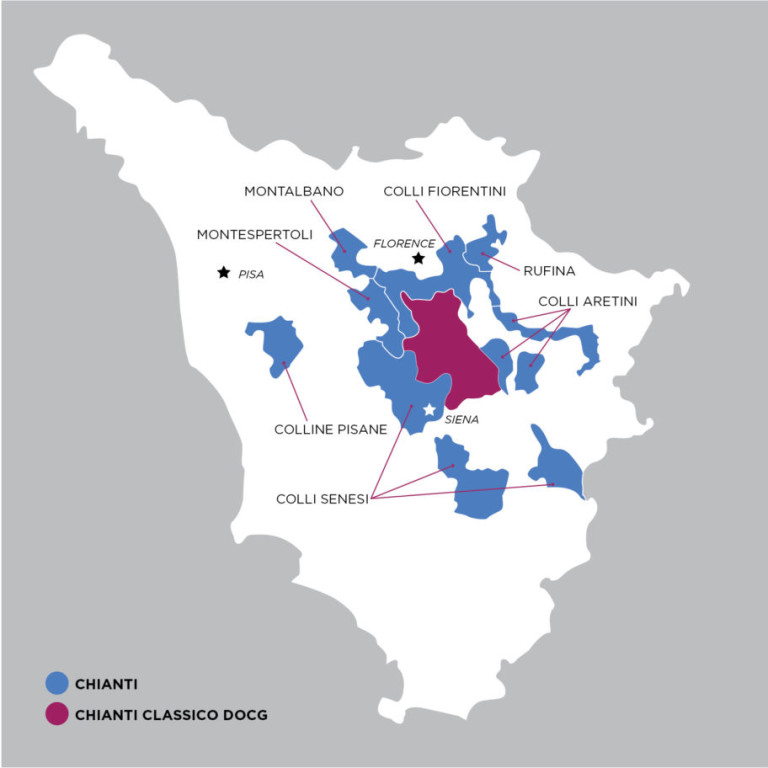
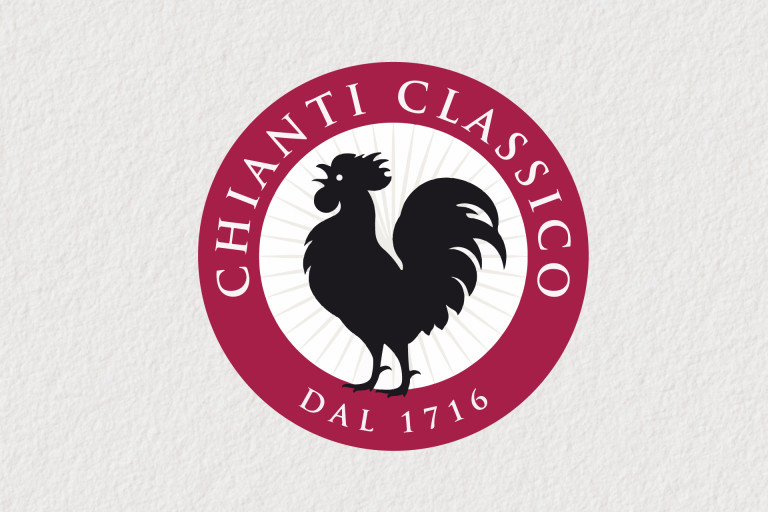
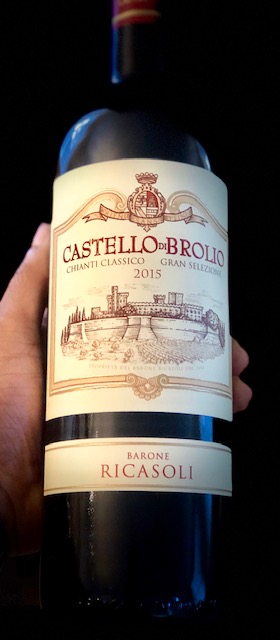
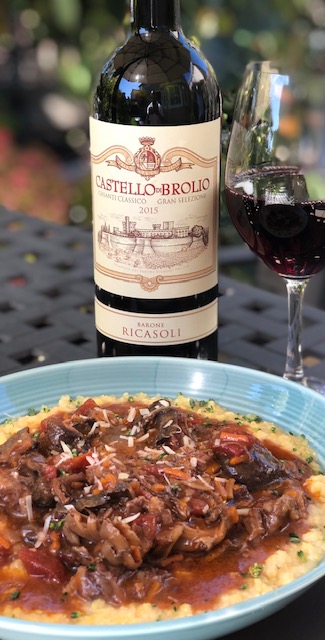
Such a beautiful a wine. And the Oxtail Guazzetto looks fantastic!
Thanks so much Nicole. Indeed, it was delicious! I’m looking forward to trying it with fish!
Thanks for the great overview Martin…can’t believe we haven’t been to this region yet! And love that you adapted the recipe, looks like a fantastic pairing!
Hard to believe you two wine-travelers haven’t been to Tuscany yet. Have been enjoying the pics from your visit to Chile!
What a great read Martin! I think you explained the complexity of Chianti’s history very well. And that food pairing looks and sounds divine!
Thanks so much for the kind words Casey! Cheers!
As always this dish looks delicious. I really should get an InstaPot. This wine and it’s history…and it sounds so delicious, flavors so much deeper than you find in normal Chianti, I suppose due to the extra time in oak?
Hi Robin. Thanks for the kind words. Agree that bit of extra time in oak should definitely make the wine more complex!
I am drooling over that ragu….OH MY YUM, I’ll bet the pairing was marvelous.
Thanks for the kind words Wendy. I must say it was “drool-worthy”! lol
Bet the oxtail stew was quite yummy with this complex Ricasoli. Looks beautiful, too!
Thanks so much Linda. It was indeed tasty!
Love the Chianti breakdown, so helpful. Thanks for that!
Thanks so much for the kind words Andrea! Cheers!
I’ve never heard of that dish, but I do love oxtails. Thanks for the introduction! The photo of it is really gorgeous.
If you love oxtails, I think you’ll enjoy this dish. The only thing I didn’t like about making it in the Instant Pot is that I would’ve like the oxtail to have been browned more.
Now I am getting hungry 🙂 Sounds like a very good pairing for this Chianti Classico. Thanks for a nice overview of Chianti Classico and the Ricasoli family also.
Glad you got to experience the Gran Selezione for the first time. The dish looks fabulous!